Neurofibromas and Ras
NF1 (neurofibromatosis type 1) is a genetic condition that is caused by alterations in the NF1 gene, which encodes the protein neurofibromin. Neurofibromin acts as a negative regulator of the Ras signaling pathway, which plays a crucial role in regulating cell growth, proliferation, and differentiation. A mutation in one germ line allele of NF1 is sufficient to result in the clinical syndrome of NF1. However, tumor formation requires loss of function in the second allele. The fact that biallelic loss of NF1 is required for tumor formation defines NF1 as a tumor suppressor gene.
In healthy cells, Ras regulates proliferation, differentiation, transformation, and apoptosis. Ras is most often maintained in the inactive (GDP-bound) conformation. When stimulated, Ras releases GDP and binds GTP. Ras-GTP stimulates several pro-growth pathways including the RAF/MEK/ERK and PI3K/AKT/mTOR pathways. Neurofibromin regulates Ras to maintain it in the Ras-GDP confirmation. In the absence of functional neurofibromin, Ras-GTP is constitutively activated leading to excess stimulation of multiple pro-growth pathways.
Ras represents a family of proto-oncogenes that are implicated in both cancers common to the general population and in NF1 associated benign tumors. Mutations in, and over expression of, Ras genes (H-Ras, K-Ras and N-Ras) are found in almost all known solid tumors including breast cancer, thyroid cancer, prostate cancer, lung cancer, colorectal cancer and brain cancer. Moreover, mutations in NF1 have been linked to several malignancies that often occur sporadically including melanoma, lung adenocarcinoma, ovarian and breast cancer, glioblastoma, juvenile myelomonocytic leukemia and gastrointestinal stromal tumors. Therefore, therapeutics developed to ameliorate neurofibromin dysfunction are likely to benefit both tumors that occur in the setting of the condition NF1 as well as many common, sporadic, treatment resistant, cancers.
The Lifecycle of NF1

NF1, Neurofibromin and Ras
Normal neurofibromin binding maintains Ras in an inactive conformation and prevents it from stimulating cells to grow and divide. When there is an alteration in the NF1 gene, the neurofibromin protein cannot bind to Ras. As a result, Ras is constitutively active and multiple pathways are stimulated that direct the cells to divide. This leads to benign tumors, cancers and altered organ function.
Ras is most often maintained in the inactive (GDP-bound) conformation. When stimulated, Ras releases GDP and binds GTP. Ras-GTP is the activated form that stimulates several pro-growth pathways including the RAF/MEK/ERK and PI3K/AKT/mTOR pathways. Neurofibromin, the protein product of NF1, is one of the proteins required for regulation of healthy Ras. Neurofibromin regulates Ras via interaction with Spred1. Ras-regulatory proteins like neurofibromin and Spred1 are found in a collection of genetic conditions that result in altered regulation of healthy Ras called Rasopathies. In many cases, such as in the condition NF1, these conditions include tumor formation, organ dysfunction and increased cancer incidence.
When Ras develops spontaneous mutations (i.e. H-Ras, K-Ras and N-Ras) it becomes a potent oncogene that drives of some of the most common cancers world wide including breast, colon, lung, thyroid, prostate cancer, and brain cancer. In addition, in the absence of a germline NF1 loss, somatic loss of NF1 contributes to the development of common cancers such as a subset of breast and lung cancers. Hence, understanding the role of NF1 and neurofibromin in Ras regulation and developing therapeutics that overcome dysregulation of this system benefits people with rare Rasopathies as well as some of the world’s most common cancers.
See the Index of Funded Programs to review scientific and clinical research studies.
Contact us to be connected with scientific advisors, peers and experts who can help accelerate your research into Ras, neurofibromin, or NF1 gene mutations.
